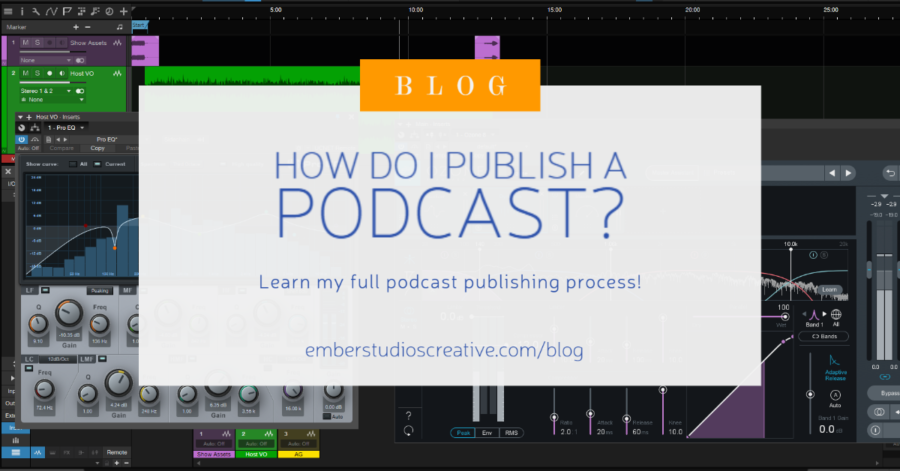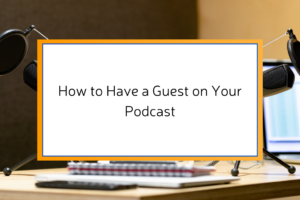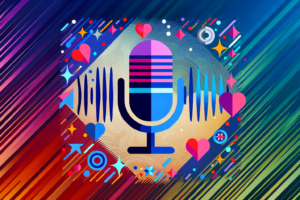How Do You Make a Podcast?
Today I’m going to be describing, from beginning to end, my podcast workflow, from getting the idea for a podcast to having that podcast out and promoted.
Step 1: The Idea
The first step is the idea. Obviously, the best-case scenario is that you have a really good idea immediately. You don’t have to workshop it. You could just get it out there and start recording, but this isn’t what happens most of the time. Sometimes it’s time, and you’re like, ‘Well, I gotta record something,’ but you don’t have any ideas.
Where to Find Ideas
There are a few places you can go and research inside your podcast topic to find out what are possible good ideas. There are a lot of sites designed to help you with something like this:
- Answer the Public: You need an account to use it fully, but a free account is probably fine for you. Type in a keyword or keywords, and it will run those through each of the who, what, when, where questions. It’ll pull out what people are searching for based on the keywords you provide.
- Ubersuggest: Another keyword research tool that works similarly.
- Quora: A platform where people ask questions that could spark ideas.
- Reddit: Visit the Podcasting subreddit or other related subreddits to see what people are discussing.
Step 2: Planning
Once I have the idea for my show, the next step is planning it out.
Using a Project Management Tool
I go into Asana, which is the project management tool that I use, and I create a task for it. I decide when it’s going to come out, when everything needs to be done by, and then I just work off that list.
Deciding on Lead Magnets
This is also where I decide if this episode needs a lead magnet, which is some type of product, resource, or training I can offer in exchange for an email address. For example, a podcast episode about the best places to hike in Indiana might have a PDF that lists all the places mentioned in the episode.
Step 3: Creating an Outline
Once I’m done planning, the next thing I do is open up Google Drive and start working on an outline.
Script vs. Bullet Points
How I do the outline is pretty variable. For a while, I was writing out full scripts and reading off them while recording. I thought those episodes were great, but they were much more work. Now, I’ve started transitioning to bulleted lists. Both approaches work, and you can choose what fits your style best.
Step 4: Recording
Once the outline is ready, I sit down and hit record.
Streamlining the Recording Process
I keep my microphone out so I don’t have to waste time setting it up. The fewer steps between me and recording, the better. When recording, if I trip over my words, I re-record that sentence—or not, depending on my mood.
Getting Into the Right Mood
Personally, I like to listen to epic music in my headphones while recording. It gets me pumped.
Step 5: Editing
After recording, it’s time to edit. I trim everything, remove unwanted sounds, and tighten things up. Some people prefer a looser style, but I like my podcasts tight and polished.
Mixing
After editing, I use compression and EQ to get the audio levels right. I don’t go overboard—just enough to ensure it sounds good on all platforms.
Step 6: Publishing and Promoting
Publishing
I upload the podcast to Libsyn, my preferred publishing platform. Libsyn has a promo code you can use to get up to two months free at emberstudioscreative.com/Libsyn with the code EMBER.
Creating Show Notes
I add show notes into Libsyn, schedule the episode for release, and hit publish. Then I wait for it to go live.
Social Media Promotion
While waiting, I create social media posts to promote the episode. Lately, I’ve been creating minimal graphics for Facebook and Instagram and posting them on release day. I also post the episode on my website, which is optimized for SEO and email collection.
Optional Audiograms
Sometimes, I create audiograms to promote the episode further. These are short, shareable clips from the podcast.
Scheduling Posts
I use Buffer to schedule posts for Facebook, Instagram, and LinkedIn. I include hashtags to make the content discoverable.
Email Marketing
Finally, I schedule an email to my list, letting them know about the new episode. The email includes show notes and a snippet about the episode.
Conclusion
From brainstorming to promoting, that’s my entire podcast workflow. If you skip promotional aspects like email, social media, and the website, the process becomes even quicker. It’s not hard—you can do this. And if you need help, I’m here for you.
It’s really not hard. You can do this, and if you can’t, I can help.
If you are interested in additional information about how to publish a podcast, go to emberstudioscreative.com/esp011 to read more!






